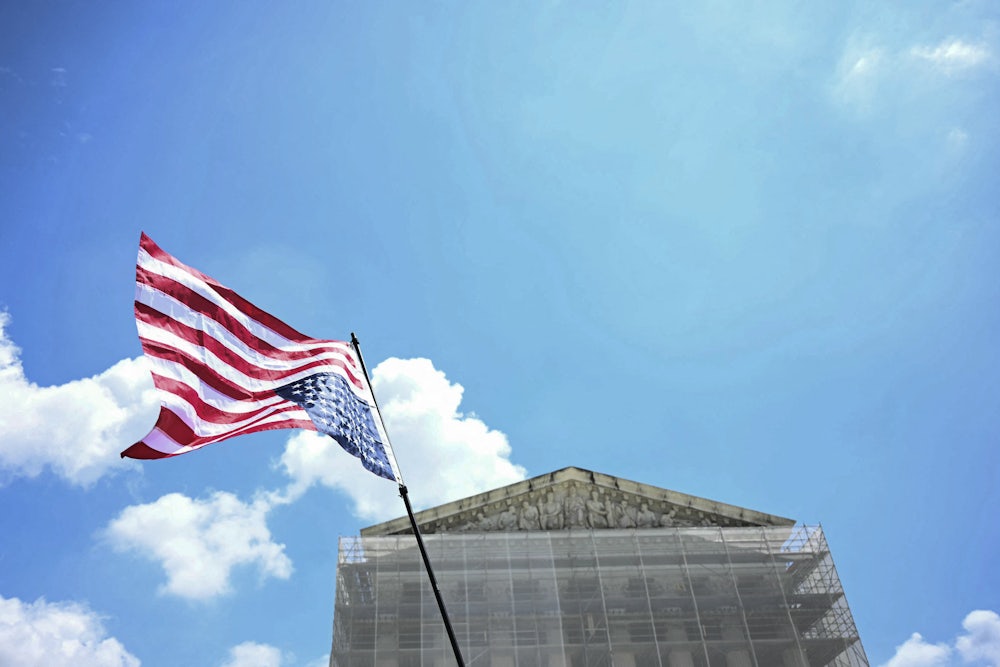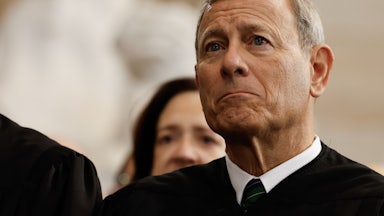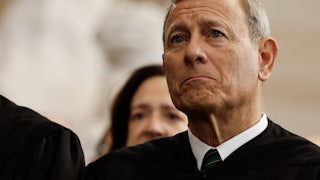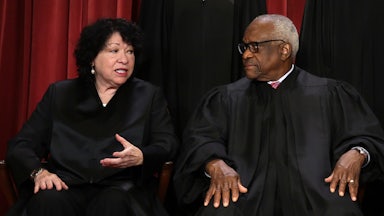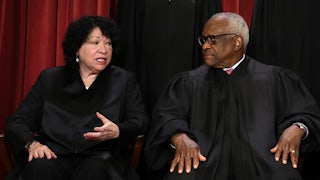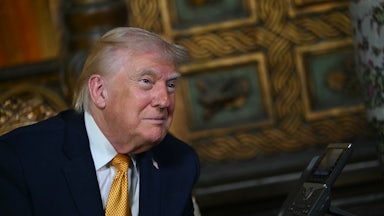It’s official: With its April order forbidding the administration from removing a group of Venezuelan migrants from the United States, the Supreme Court finally pushed back against the Trump administration. In some ways, this was a watershed moment. But the deeper truth is that this moment was somewhat underwhelming. This is, after all, the bare minimum of what the court should be doing in the face of such blatantly unconstitutional behavior. What’s really surprising isn’t that the Supreme Court is pushing back now—it’s that it’s taken this long.
How do we account for the court’s hesitancy when it comes to curbing the current administration’s judicial excesses? It remains one of the most confounding mysteries of the last few months that the branch of the government most directly empowered to safeguard the constitutional order has instead let Trump run roughshod over it. It is all the more mysterious because the justices’ inaction has only weakened the court’s own stature in the process—a court overseen by ostensible institutionalist Chief Justice John Roberts, no less. Partisanship provides one possible answer, but not even that seems to explain everything. What is the Supreme Court thinking?
The answer is lying in plain sight—if you’re a lawyer, that is: the canon of constitutional avoidance.
Constitutional avoidance is one of those terms that you probably haven’t heard of unless you’re a legal professional. It’s what lawyers call a “canon of construction”—that is to say, a principle that courts can use in interpreting the law. (Textualism and originalism are more famous examples of such canons.) The principle of constitutional avoidance is that if a court can avoid creating a constitutional issue in issuing a decision, it should. This generally plays out as follows: A court is faced with two plausible ways it could decide a case. One of those ways requires the court to declare something unconstitutional. One of them does not. So the court chooses the one that does not. That’s constitutional avoidance.
There are a few justifications for constitutional avoidance. If courts were always pronouncing things unconstitutional, for example, it would throw a lot of undue chaos into a system that is fundamentally about stability. Moreover, if courts were always putting the Constitution into conflict with new laws, the Constitution risks being weakened. Additionally, as the least majoritarian branch of the federal government (because federal judges are appointed and not elected), it’s not a great look for federal courts to be constantly overturning laws passed by popularly elected lawmakers.
These are all decent reasons for a court to favor one interpretation of the law over another—as long as both interpretations are persuasive, that is. But when the interpretation that avoids the constitutional problem is drastically less persuasive than the one that does not—or even mildly less persuasive—and the court still favors it, constitutional avoidance transforms from a prudent interpretive doctrine into a lawyerly fiction that leads the judiciary into the realm of absurdity.
Ladies and gentlemen: Welcome to the current Supreme Court.
If you examine some of the court’s most flabbergasting decisions over the last few months through the lens of constitutional avoidance, they suddenly make a strange kind of sense. The milquetoast order suggesting that Trump only needs to “facilitate” the return of Kilmar Abrego Garcia to the United States, even though his deportation was made in obvious defiance of the judicial branch’s authority? Totally logical if your primary objective is to avoid a constitutional conflict no matter the cost. Allowing mass deportations of Venezuelan migrants on the basis that those migrants could protect themselves via habeas corpus, a legal mechanism to which they have no practical access? Eminently reasonable if the only aim is to avoid pronouncements of unconstitutionality. Reinstating the firing of federal employees on the basis that the parties bringing the suit lacked standing; overturning an order forbidding the Education Department from using diversity, equity, and inclusion to freeze funds to schools on the basis that the lower court lacked jurisdiction to issue the order; the list goes on and will almost certainly continue to grow.
The principle of constitutional avoidance isn’t innately absurd. The court has previously applied the principle in more parsimonious fashion to (arguably) less silly-seeming results. One example is Masterpiece Cakeshop in 2018, where a seven-person majority—including Alito and Gorsuch, with a Thomas concurrence—elected to avoid the complex constitutional issue of how the right to same-sex marriage intersected with First Amendment protections, and instead disposed of the case on the basis that the state commission in question had demonstrated a particular hostility toward religious beliefs.
Similarly, in Zadvydas v. Davis, the 2001 case in which the Supreme Court found that aliens cannot be held indefinitely because to do so would violate the due process clause—that is to say, it would create a constitutional issue—the court went so far as to reprimand the Fifth Circuit for using constitutional avoidance to dodge an undodgeable issue, admonishing that constitutional avoidance only “allows courts to choose among constructions which are fairly possible … not to press statutory construction to the point of disingenuous evasion even to avoid a constitutional question.” But if you smash-cut to the present moment, suddenly the Supreme Court’s chiding of the Fifth Circuit may as well be a description of its own way of doing business.
Constitutional avoidance is one of those lawyerly principles that makes perfect sense in the abstract, and only in the abstract. For constitutional avoidance to work the way it is supposed to, the government has to be functioning the way it was designed, with an executive branch that stays largely within the bounds of its power, a legislative branch that is actively legislating, and a judiciary that does more than rubber-stamp policies that align with its politics. But constitutional avoidance doesn’t work with a president who is not merely unaware that his power has constitutional boundaries but is intent on erasing them. That is precisely the situation in which a constitutional issue cannot be avoided. Thus, when the Supreme Court still insists on avoiding it, it ends up creating a legal world in which it is impossible to have a constitutional problem—which is why it is so striking when the Supreme Court finally decides to draw one small line in the sand.
Lawyers—and the Supreme Court in particular—have always existed in a world in which common sense plays less of a role than the manipulation of abstruse legal principles. In the last few years, the contrast between these two worlds has been on high display as the Supreme Court has repeatedly overturned five decades of settled precedent—from abortion rights in Dobbs to affirmative action in Students for Fair Admissions, to administrative action in Raimondo—largely on the basis of textualism and originalism, canons of construction that began as niche academic exercises and then grew into whole movements. Constitutional avoidance hasn’t yet reached public awareness the way textualism or originalism has, but it deserves to be talked about, because it is arguably guiding some of the most consequential legal precedents of our time—not to mention the most absurd.
And that absurdity only magnifies when you contrast the depth of the court’s current ability to avoid constitutional issues under Trump with its chronic inability to do so in less egregious situations under Biden. But even setting historical comparisons aside, there is a fundamental ridiculousness to using a principle that is all about protecting the constitutional order only to avoid every constitutional issue. Because if the court can only protect the constitutional order by avoiding every constitutional issue, is that really a constitutional order worth protecting?
